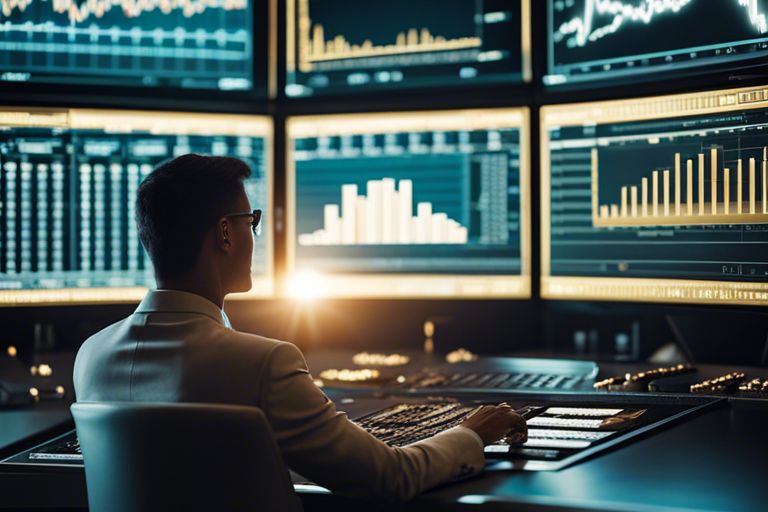The Smart Investor’s Guide On How To Buy Precious Metals

Precious metals have long been considered a safe haven for investors looking to diversify their portfolios and protect their wealth. However, navigating the world of buying precious metals can be daunting for beginners. In this comprehensive guide, we will walk you through everything you need to know to make informed decisions when investing in precious metals. From understanding the different types of precious metals to choosing the right dealer and storage options, this guide will equip you with the knowledge and confidence to start building your precious metals portfolio like a savvy investor.
Understanding the Market
Historical Performance of Precious Metals
On the historical front, precious metals have proven to be reliable assets for investors looking to diversify their portfolios and safeguard against economic uncertainties. Over the years, gold, silver, platinum, and palladium have shown resilience and stability, often outperforming traditional investments during times of market turbulence.
Factors Influencing Precious Metal Prices
In the matter of understanding the market dynamics of precious metals, several key factors come into play. These include global economic conditions, central bank policies, geopolitical tensions, inflation rates, and currency fluctuations. Investors need to stay informed and closely monitor these variables to make well-informed decisions.
- Geopolitical tensions
- Economic indicators
- Supply and demand dynamics
Metals such as gold and silver are often seen as safe-haven assets during times of uncertainty, leading to an increase in demand and subsequently higher prices. On the other hand, factors such as a stronger dollar or an increase in interest rates can lead to a decline in precious metal prices.
- Interest rates
- Currency movements
- Inflation rates
Investment Options
Physical Precious Metals
On the spectrum of investment options, physical precious metals offer a tangible asset that can provide a sense of security and stability to an investor’s portfolio. Gold, silver, platinum, and palladium are popular choices for those looking to diversify beyond traditional securities. When purchasing physical precious metals, it is crucial to buy from reputable dealers to ensure authenticity and quality. Storing these metals securely is also a consideration, as they are susceptible to theft and damage.
Paper Precious Metals
An alternative to owning physical precious metals is investing in paper forms such as exchange-traded funds (ETFs), futures contracts, or mining stocks. These paper investments provide exposure to the price movements of precious metals without the need for physical storage. However, it’s vital to understand that these paper assets come with their own set of risks, such as counterparty risk and market volatility.
Physical precious metals provide a tangible asset that can be held in your possession, offering a sense of security in times of economic uncertainty. On the other hand, paper precious metals provide a more convenient way to invest in these metals without the responsibility of physical storage. Both options have their pros and cons, and the choice ultimately depends on your investment goals and risk tolerance.
Purchasing Strategies
Timing Your Purchase
Your timing in purchasing precious metals can greatly impact the cost of your investment. The market for metals like gold and silver can be volatile, so it’s vital to keep an eye on market trends and news that may affect prices. Consider dollar-cost averaging to spread out your purchases over time and minimize the impact of market fluctuations.
Diversification and Risk Management
An important aspect of buying precious metals is diversification. Don’t put all your eggs in one basket – consider spreading your investment across different types of metals such as gold, silver, platinum, and palladium. Diversification can help mitigate risks associated with any one metal’s market fluctuations, ensuring a more stable investment portfolio.
This approach can also provide protection against geopolitical events or economic downturns that may affect specific metals differently. By diversifying your holdings, you can better safeguard your wealth and potentially increase your returns in the long run.
Selling and Liquidation
When to Sell
Not sure when is the right time to sell your precious metals? With the fluctuating market conditions, it’s important to keep a close eye on the prices. When you see a significant price increase and you’ve met your investment goals, it may be a good time to consider selling.
How to Sell
Liquidation of precious metals can be done through reputable dealers, auctions, or online platforms. Another popular option is to sell back to the same dealer you purchased from initially. This ensures a smoother transaction process as they are already familiar with the authenticity of the metals.
Another important factor to consider when selling is the method of payment. Some dealers offer instant cash, while others may offer a higher price if you opt for store credit instead. It’s crucial to weigh your options and choose the method that best aligns with your financial goals.
Final Words
Considering all points discussed in ‘The Smart Investor’s Guide On How To Buy Precious Metals’, it is evident that investing in precious metals can be a lucrative option for long-term wealth preservation. By understanding the different types of precious metals, conducting thorough research, and choosing reputable dealers, investors can make informed decisions and secure their financial future. Remember to diversify your portfolio, stay updated on market trends, and seek professional advice when necessary. With the right knowledge and strategy, buying precious metals can be a rewarding investment that adds stability and value to your overall financial plan.
